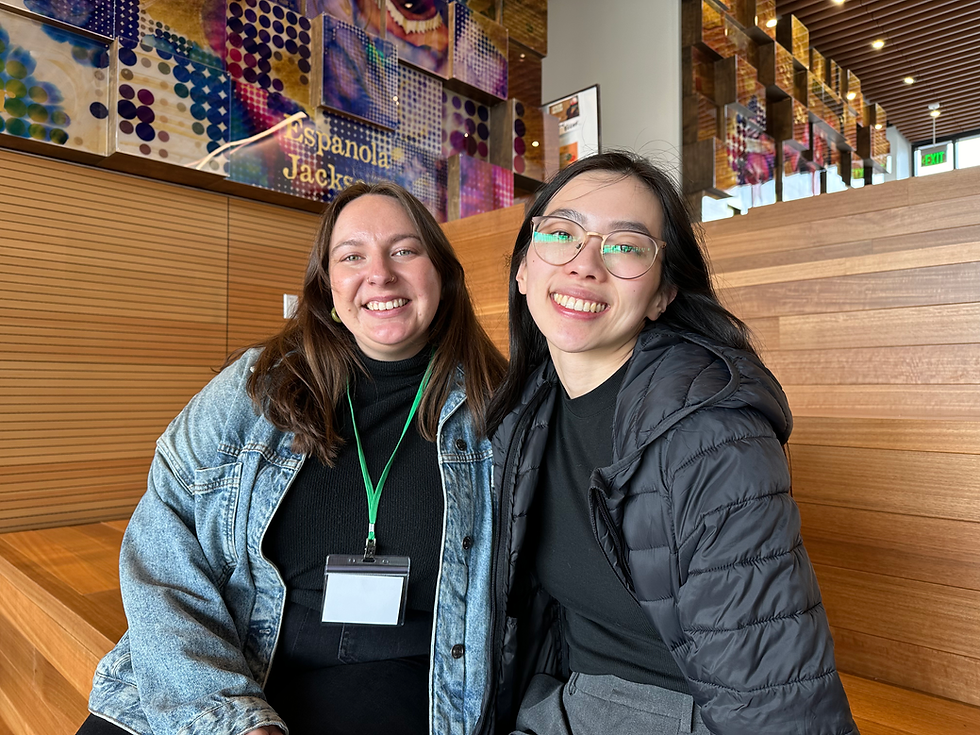From Charity to Food Sovereignty, 3 Lessons from the FAACTS Food Action Summit in San Francisco
- alisoncohenrtf
- Mar 22, 2024
- 3 min read
Updated: Mar 23, 2024
Contributed by By Rita Chang, Northwest Harvest

The Food and Agriculture Action Coalition Toward Sovereignty (FAACTS) Coalition held its inaugural Food Action Summit on March 3 and 4 in San Francisco. Convening funders, farmers, restaurant workers, community-based organizations, and local government, this two-day learning exchange helped demonstrate how to build an equitable and just food system for all in San Francisco.
FAACTS mission is "to build a just, sustainable, and holistic food system, ensuring we are neighborhood-based and coordinated across every district in San Francisco, with the goal of nourishing our community in a way that is sincere, healthy, empowering, specific, culturally relevant, humble, and abundant.” The path to food sovereignty includes the Right to Food.
Rita Chang, Campaign Manager at Northwest Harvest, Emily Settlecowski, Manager of Strategic Initiatives at Metro Caring, and Alison Cohen, Coordinator of the National Right to Food Community of Practice, led a session on the Right to Food. Below are some key takeaways from the panel and the summit.

Charity can temporarily bridge the gap in making sure culturally relevant food is accessible in the local food system.
While charity alone will not end hunger, food banks address immediate threats to food security, including a general lack of culturally relevant foods. Food banks can buy food from local Black, Indigenous, and other people of color (BIPOC) farmers using unrestricted funds or government funds that offer more flexibility in spending, such as the Emergency Food Assistance Program (TEFAP) and the We Feed WA program. Food banks and other organizations are increasingly embracing “food hubs,” which are aggregators of local food products that are then sold to restaurants, schools, and other businesses. This model embraces collaboration and supports small-scale producers in selling their products with the infrastructural support from community-based organizations.
2. The Right to Food provides a legal framework to hold the government accountable to the needs of the people.
The Right to Food is “when [all people], alone or in community with others, have physical and economic access at all times to adequate food or means for its procurement [such as water, land, and seeds].” If we have a human right to food, then our government has a clear role in ensuring that food is available, accessible, and adequate for all.

When asked how it feels when the Right to Food is missing, session participants said “undignified,” “disconnected,” and “excluded.” Participants found accessibility, both physical and economic, important in their conception of the Right to Food; it means dignity, and the ability to choose your own food.
The Right to Food is an opportunity to make smart, targeted investments with a hugely positive impact in our state. We cannot address hunger without addressing other systems of injustice. We can’t practice food justice without advocating for better wages and housing. And of course, holding the government accountable for a human right to food means reckoning with the corporate control of our food system.

3. We need a revolution to guarantee food sovereignty.
Food sovereignty requires that the people define and control their own food system, which includes the means of production and distribution.
“Whoever controls the water, seeds, and the land, controls our lives,” Navina Khanna, Executive Director of the HEAL Food Alliance, declared to the room. While Kroger failed to acquire Albertsons earlier this year, it still speaks to the larger picture of corporate control of the U.S. grocery industry. While four companies dominate the U.S. meat industry and three control seeds globally, food sovereignty remains a challenge for people everywhere. Yet, amidst these challenges, the dialogue continues, fueled by a collective desire for change.
We asked participants, “What would it take for you and your community to have access to safe, culturally-acceptable and nutritious food?”
People: political will and policy change, community control of resources, racial and cultural diversity in politics
Narratives: recognition of food as a human right, people over profit, abundance and solidarity
Capital: sustained funding, redistribution of land and other resources, community investments and industry divestments, universal basic income
Food: agroecology and other regenerative practices, local and diversified crop production, toxin-free fresh food

Between grassroots organizing, learning exchanges, and breaking bread together, communities like San Francisco are already laying the groundwork for a future where access to safe, culturally-appropriate, and nutritious food is a fundamental right, not a privilege.



